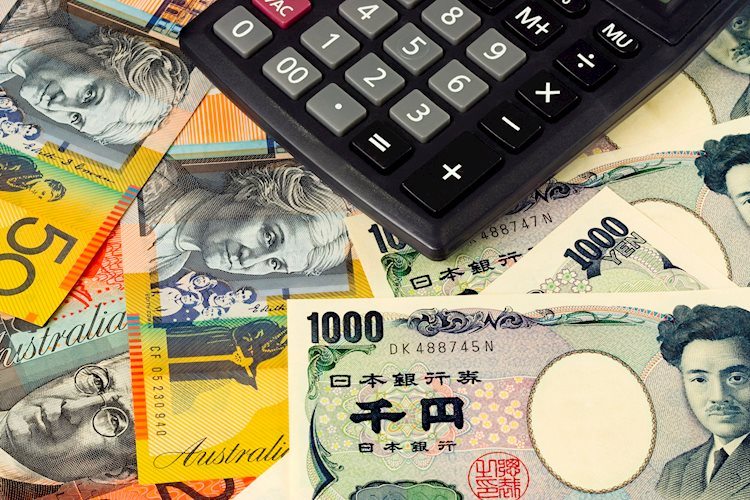The AUD/JPY pair has seen an uptick in recent trading sessions as a result of improved risk sentiment sparked by a stronger-than-expected recovery in US retail sales, easing concerns of a US recession. This has led to the Australian Dollar gaining ground against the Japanese Yen, with the pair trading around 98.90 during the early European session on Friday. Additionally, hawkish comments from RBA Governor Michele Bullock further support the Aussie Dollar and the AUD/JPY cross, with Bullock indicating no rate cuts in the near future. The RBA is focused on potential upside risks to inflation and believes it has struck the right balance in the current economic environment.
Recent data out of China showing growth in retail sales has also supported the Aussie Dollar, as China is a significant trading partner of Australia. This positive economic data from China has contributed to the strength of the Australian Dollar and may continue to support the AUD/JPY cross. However, the Japanese Yen could see further appreciation as recent GDP data from Japan suggests growth in the country’s second quarter, potentially leading to a near-term interest rate hike by the BoJ.
Political uncertainty in Japan, with Prime Minister Fumio Kishida announcing he will not seek re-election as leader of the LDP in September, may impact the downside of the JPY. This uncertainty could lead to fluctuations in the value of the Japanese Yen and influence the AUD/JPY pair in the near term. Overall, the interplay of economic data, central bank policies, and political developments in both Australia and Japan will continue to shape the movements of the AUD/JPY pair in the coming sessions.
The Reserve Bank of Australia plays a crucial role in influencing the value of the Australian Dollar by setting interest rates that impact borrowing costs in the economy. The RBA aims to maintain a stable inflation rate by adjusting interest rates as needed, with relatively high rates supporting the AUD and low rates having the opposite effect. Additionally, China’s economic health is a key factor for the AUD, as positive growth in China increases demand for Australian exports and supports the value of the currency. The price of Iron Ore, Australia’s largest export, also plays a significant role in driving the Australian Dollar, with higher prices typically leading to a stronger AUD.
Furthermore, the trade balance, which measures the difference between a country’s exports and imports, can impact the Australian Dollar based on demand for Australian exports. A positive trade balance, where exports exceed imports, strengthens the AUD as foreign buyers seek to purchase Australian goods. Conversely, a negative trade balance can weaken the currency. These various factors – interest rates, economic data, trade balance, and commodity prices – all work together to influence the value of the Australian Dollar and its pairs like the AUD/JPY. Traders and investors will continue to monitor these factors to make informed decisions regarding the AUD/JPY pair in the forex market.











